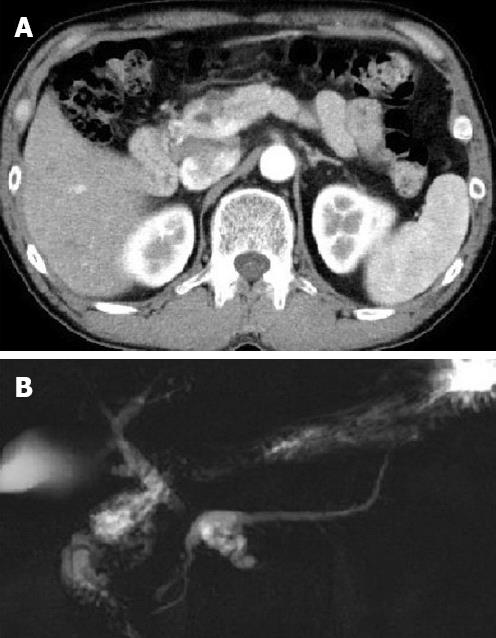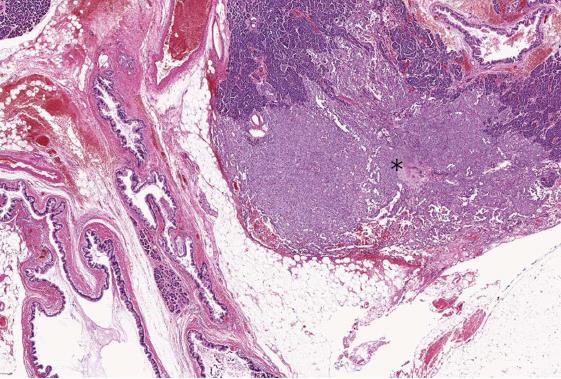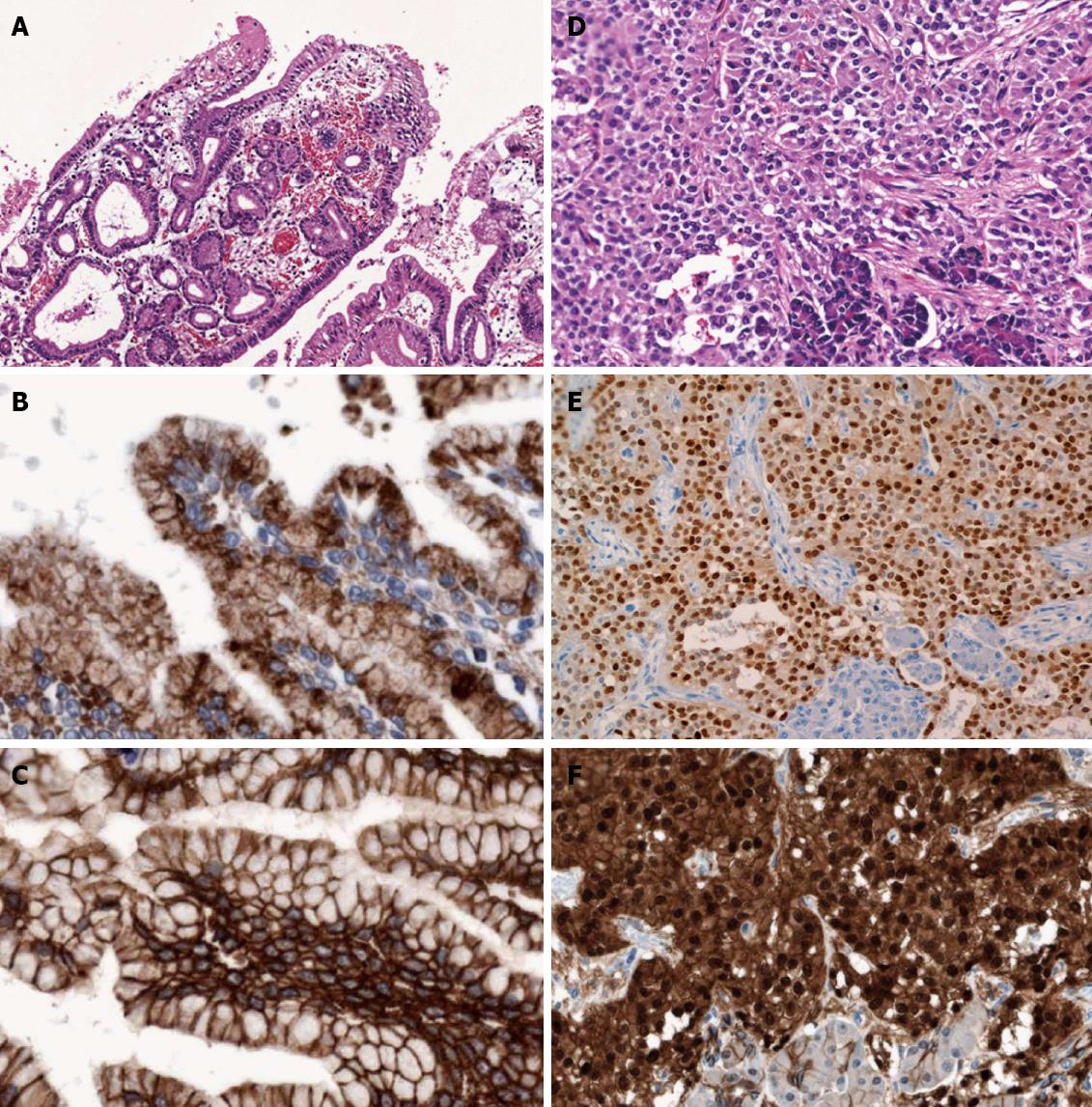Copyright
©2013 Baishideng Publishing Group Co.
World J Gastroenterol. Jun 7, 2013; 19(21): 3358-3363
Published online Jun 7, 2013. doi: 10.3748/wjg.v19.i21.3358
Published online Jun 7, 2013. doi: 10.3748/wjg.v19.i21.3358
Figure 1 Computed tomography and magnetic resonance cholangiopancreatography imaging.
A: Multiple cystic lesions measuring 23 mm are indicated in the neck of the pancreas; B: Multiple cystic dilations of pancreatic branch duct connecting to the dilated main pancreatic duct are indicated in the neck of the pancreas.
Figure 2 Microscopic findings (low-power view).
A small and irregularly shaped solid lesion of solid pseudopapillary neoplasm (asterisk) can be observed near the cystically dilated branch ducts of intraductal papillary mucinous neoplasm (hematoxylin and eosin stain, × 10).
Figure 3 Microscopic and immunohistochemical findings.
A: High-power view of intraductal papillary mucinous neoplasmintraductal papillary mucinous neoplasm (IPMN). The dilated main and branch pancreatic ducts show intraductal pyloric-gland papillary projections [hematoxylin and eosin (HE), × 100]; B: Mucin 5AC-positivity in the gastric-type papillary projections of IPMN (× 400); C: β-catenin shows membranous and cytoplasmic expression, but does not show abnormal expression in the nuclei of IPMN (× 400); D: High-power view of solid pseudopapillary neoplasm (SPN). The neoplastic cells show sheet-like or pseudopapillary proliferation and infiltrate among acinar cells (HE, × 200); E: Progesterone receptor nuclear labeling in the neoplastic cells of SPN (× 200); F: Abnormal nuclear and cytoplasmic β-catenin expression in neoplastic cells of SPN (× 400).
- Citation: Hirabayashi K, Zamboni G, Ito H, Ogawa M, Kawaguchi Y, Yamashita T, Nakagohri T, Nakamura N. Synchronous pancreatic solid pseudopapillary neoplasm and intraductal papillary mucinous neoplasm. World J Gastroenterol 2013; 19(21): 3358-3363
- URL: https://www.wjgnet.com/1007-9327/full/v19/i21/3358.htm
- DOI: https://dx.doi.org/10.3748/wjg.v19.i21.3358











